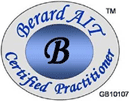Services:
Reading & Written Language
Speech language pathologists serve a vital role in the development of literacy skills. Spoken language and literacy have a reciprocal relationship such that the language skills learned in the early years will have a direct effect on a child’s reading and writing success in school. One of the first spoken language skills connected to early reading and writing skills is phonological awareness. Phonological awareness is the knowledge that words are made up of sounds (i.e. “cat” has 3 sounds, c-a-t). It is very important that children at this age acquire strong phonological awareness skills such as rhyming and engage in sound play so they can later apply these skills to the printed letters. Speech therapy sessions are very beneficial if your child is experiencing difficulties with early literacy skills.
The best approach to reading instruction, and one that has been heavily researched by the National Reading Panel, is one that incorporates:
- Explicit instruction in phonemic awareness
- Systematic phonics instruction
- Methods to improve fluency
- Ways to enhance comprehension
PROMPT
PROMPT is an acronym for Prompts for Restructuring Oral Muscular Phonetic Targets. This technique uses touch cues to one’s articulators (jaw, tongue, lips) to guide them when producing a sound, word, phrase or sentence. These touch cues help with motor control, developing proper oral movements and decreasing extraneous movements such as jaw shifting and improper lip rounding.
Who can benefit from PROMPT therapy?
Clients who may have the following diagnoses:
- motor speech disorders
- articulation problems
- non-verbal
- aphasia
- apraxia
- cerebral palsy
- acquired brain injuries
- autism spectrum disorders
Berard Auditory Integration Training (AIT)
 Berard Auditory Integration Training (AIT) is an intervention developed by Dr. Guy Berard to correct or improve auditory hypersensitivity, distortions, and delays in the signals that interfere with an individual's ability to process auditory information normally. According to Dr. Berard, these auditory problems are factors that contribute to disorders such as learning disabilities, attention deficit, dyslexia, hyperactivity, central auditory processing disorder, sensory processing disorder, autism and pervasive developmental disorder.
Berard Auditory Integration Training (AIT) is an intervention developed by Dr. Guy Berard to correct or improve auditory hypersensitivity, distortions, and delays in the signals that interfere with an individual's ability to process auditory information normally. According to Dr. Berard, these auditory problems are factors that contribute to disorders such as learning disabilities, attention deficit, dyslexia, hyperactivity, central auditory processing disorder, sensory processing disorder, autism and pervasive developmental disorder.
The following is a list of characteristics typical of a child experiencing problems with auditory processing:
- The child covers their ears, grimaces, cries or becomes irritable in the presence of loud sounds or “particular” sounds.
- The child seems to hear sounds that others do not.
- The child seems unaware of sounds even though there is no hearing loss.
- The child becomes hyperactive, agitated, or aggressive in a noisy environment. There is a notable deterioration of behavior in a noisy versus quiet environment.
- The child becomes withdrawn in a noisy environment.
- The child watches others before following directions.
- The child does not respond when their name is called.
- The child stares at you after a direction has been given.
- The presence of certain sounds appears to disorient the child and/or contribute to a loss of balance.
- The child seems to be calm and “listen well” in one-on-one situations, but not in a group.
- The child has trouble localizing sound.
- The child has difficulty discriminating speech sounds.
- The one child in class who is most likely to say, “What?” or “I didn’t hear you.”
- The child seems to “tune out” auditory information when visually or motorically engaged.
- The child is physically exhausted at the end of the day.
- The child has atypical speech and language development.
Become a Berard AIT Practitioner from a proven expert
Acquire the knowledge and certification needed to provide Berard Auditory Integration Training (AIT) to clients of your own. AIT practitioner training includes lectures, discussion, and hands-on work with approved Berard AIT equipment.
What to expect from the seminar
The three day training seminar includes workshops, written work, and case studies involving:
- client evaluations and intake
- audio testing requirements
- AIT procedures (interpreting audio tests, selecting filters, selecting music, operation of device, client cooperation, etc.)
- parent consultation
- data collection and analysis
- aftercare consultation
- research studies
- overview of other sound interventions
- professional practice considerations
Certification upholds the Berard AIT standards of excellence
The Berard AIT program is used as an educational intervention for those with special needs or for optimal performance. Training as a practitioner is available for those providing educational services within their professional field. A master's or doctoral degree is required, or a bachelor's degree with 5 years of actual "on-the-job" experience in a field related to special needs and/or developmental disabilities.
The Berard AIT Instructor will advise you if there are questions about eligibility.
A provisional certificate is awarded at the end of the seminar. The Berard AIT Certificate of Completion is then awarded within eighteen months upon completing the Intern Period and fifteen case studies.
Seminar fee and application for registration
The fee includes three days of workshops, all materials, and case study reviews following the seminar. A distance training program (i.e. Skype) is available, or training may be in-person with the instructor.
Please submit a free Seminar Application Form to apply for an upcoming seminar.
For additional details and referral to approved Berard instructors, please contact Kristin Keller at: ChainBridgeSpeech@gmail.com.
Accent Modification
Accent Modification training is for those who wish to modify their regional or foreign accent. Regional Accents - for example...
Read MoreAphasia
Aphasia is caused by damage to the brain resulting from stroke, traumatic brain injury, tumors or other neurological...
Read MoreApraxia
Childhood apraxia of speech (CAS) is a disorder affecting the coordination needed to produce speech sounds. It is considered a...
Read MoreArticulation
Articulation is how speech sounds are made. If someone is having difficulty producing these sounds correctly, it can be difficult to...
Read MoreAssistive Devices
The clinicians at Chain Bridge Speech and Language are experienced in incorporating alternative and augmentative...
Read MoreAuditory Processing
Auditory processing is the ability to appropriately process and interpret auditory information. This includes the ability to...
Read MoreAutism Spectrum Disorders
Autism Spectrum Disorders (ASD) is a neurodevelopmental disorder characterized by deficits in social communication and...
Read MoreDiagnostic Services
Chain Bridge Speech & Language provides full diagnostic evaluations in all areas of speech and language including reading...
Read MoreExecutive Function
Executive function is a set of mental processes that help people plan, organize, strategize, pay attention to and remember...
Read MoreExpressive/Receptive Language
Expressive language is the ability to verbally communicate your thoughts, ideas and feelings in order to have your needs met...
Read MoreReading & Written Language
Speech language pathologists serve a vital role in the development of literacy skills. Spoken language and literacy...
Read MoreSpeech & Hearing Screenings
Our certified and licensed speech language pathologists can provide speech, language and hearing screenings at your school...
Read MoreSocial Skills & Pragmatics
Social skills and pragmatics are the rules of language and behavior we use in everyday social situations. These rules involve: ...
Read MoreStuttering
Stuttering affects the fluency or natural flow of speech. Disruptions in one’s fluency, also called “disfluencies”, are a natural part of...
Read MoreTongue Thrust
A tongue thrust is when the tongue protrudes between the upper and lower teeth during speech or swallowing and/or the tongue...
Read MoreVoice
Your voice requires the use of your vocal folds and breath. If these are compromised by vocal abuse such as long periods of...
Read More
